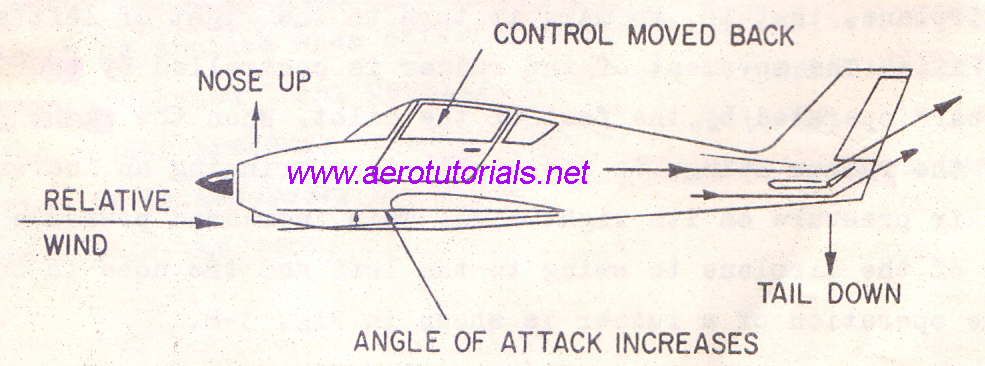Elevator…..

An elevator is defined as a horizontal, hinged control surface, usually attached to the trailing edge of the horizontal stabilizer of an airplane, designed to apply a pitching moment to the airplane. A pitching moment is a force tending to rotate the airplane about the lateral axis, that is, “nose up” or “nose down”. When the control stick or wheel in the airplane is pulled back, the elevators are raised. The force of the relative wind on the elevator surfaces tends to press the tail down, thus causing the nose to pitch up and the angle of attack of the wings to increase. The reverse action takes place when the control stick or wheel is pushed forward. During flight of an airplane the operation of the elevators is quite critical, especially at low speeds. When power is off and the airplane is gliding, the position of the elevators will determine whether the airplane drives, glides at the correct angle, or stalls. The pilot must know the stalling speed of the aircraft and keep the elevators in a position that will enable the airplane to maintain flying speed. A safe gliding speed must be well above the stalling speed; otherwise, a gust or quick shift in wind velocity could cause the airplane to stall. During the handling of the elevator control, it is necessary for the pilot to remember that an airplane will not necessarily climb when the control is pulled back. It is the power developed by the engine that determines the rate of climb of an airplane rather than the position of the elevators. As a matter of fact, if the elevators are held in a fixed position, the throttle alone can be used to make the airplane climb, drive or maintain level flight. The position of the elevator is important, however, to establish the most efficient rate of climb and a good gliding angle when power is off. It is also most essential for proper control when “breaking the glide” and holding the airplane in landing position. A special type of elevator that combines the functions of the elevator and the horizontal stabilizer is called stabilator. When this type of control airfoil is installed on an airplane, there is no fixed horizontal stabilizer. The stabilator is an airfoil that responds to the normal elevator control and serves as an elevator as well as a stabilizer. Considerable care must be taken to follow the manufacturer’s instructions in rigging the stabilator.
